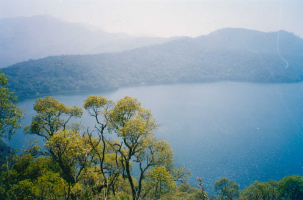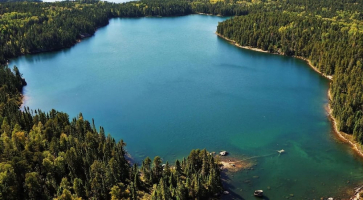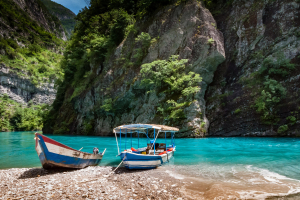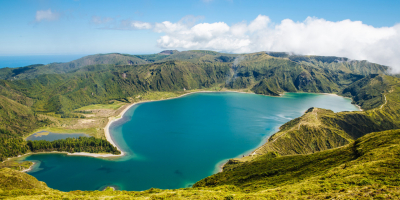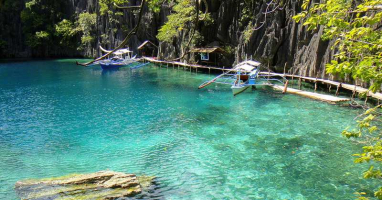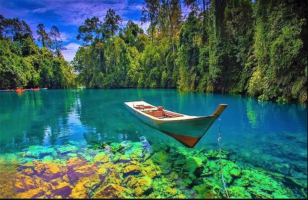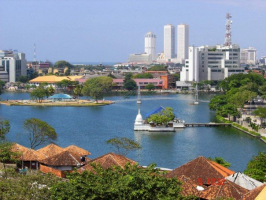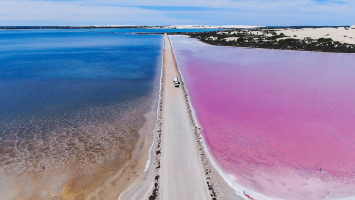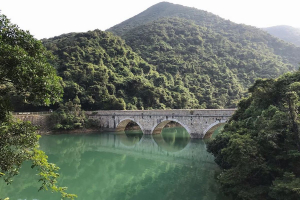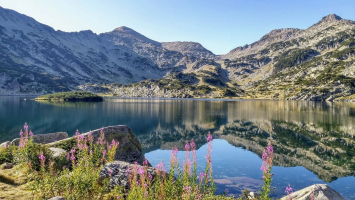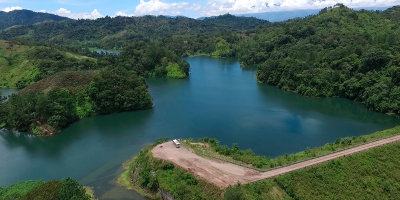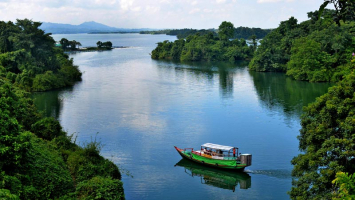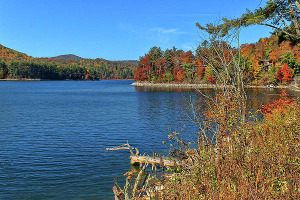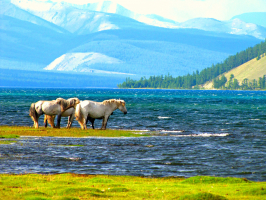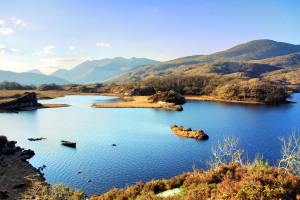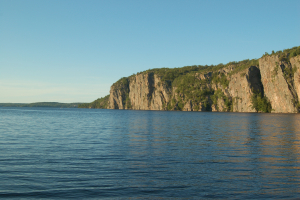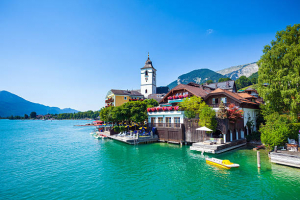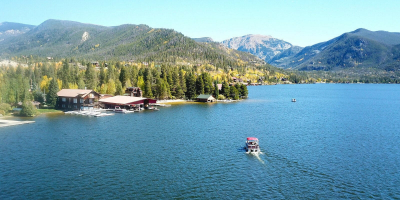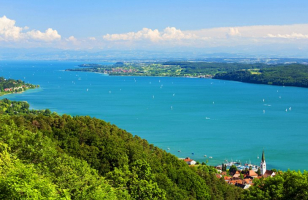Top 8 Most Beautiful Lakes in Antarctica
Antarctica is one of the remaining unexplored areas on the planet and is a location that many people are reluctant to visit. The land is over twice the size of ... read more...Australia and is cold, dry, and desolate. Despite being known for many years prior, the continent wasn't discovered until 1820, making it the last one to be explored on earth. These stunning lakes in Antarctica showcase much of the region's unmatched beauty, which makes it quite literally unlike any other location on the planet. Let’s explore the most beautiful lakes in Antarctica in the list below!
-
In 2007, Scripps Institution of Oceanography researcher Helen Amanda Fricker used satellite laser altimetry to look for a glacier's grounding line and ended up finding Mercer Subglacial Lake in the process. The stream beneath which the lake is situated, Mercer Ice Stream (formerly Ice Stream A), inspired the lake's name. John Mercer, a deceased glaciologist at Ohio State University, is honored with the name of Mercer Ice Stream. She is a member of the project's executive committee. On December 28, 2018, the Subglacial Antarctic Lakes Scientific Access (SALSA) Project reported they had reached Mercer Subglacial Lake after two days of melting their way through 1,067 m (3,501 ft) of ice with a high-pressure hot-water drill. After passing through filters that remove 99.9% of the bacteria and other contaminants, the drilling water is pasteurized and exposed to UV radiation. Along with basal ice samples and sediment cores that reached a depth of 1.76 meters, the crew also collected water samples for chemical and biological studies (5.8 ft).
A layer of ice 1,067 m (3,501 ft) thick covers Mercer Subglacial Lake, a subglacial lake in Antarctica. The water underneath is hydraulically active, with Ross Sea water replacement periods of around ten years. According to studies, the Mercer Subglacial Lake and other subglacial lakes seem to be connected, with drainage episodes in one reservoir leading to filling and subsequent drainage in other lakes. Sadly, due to global warming, the water beneath the ice sheet, which is hydraulically active, is in danger of melting and possibly collapsing.
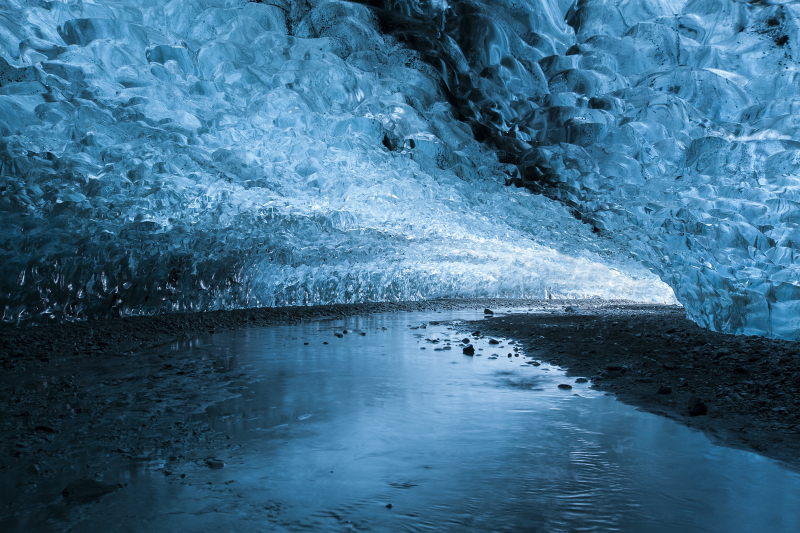
Photo: https://now.northropgrumman.com/ 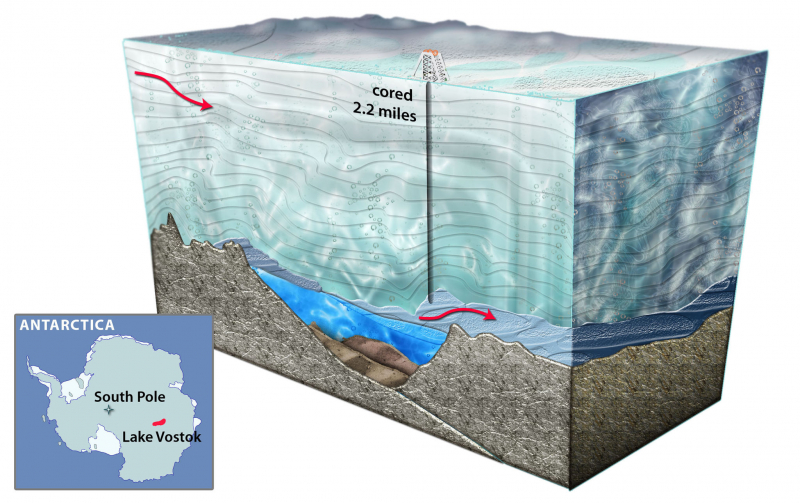
Photo: https://www.antarcticglaciers.org/ -
One of the most beautiful lakes in Antarctica is Lake Vostok, also known as Subglacial Lake Vostok or Lake East. The water body is the biggest known subglacial lake and is situated about 2.5 miles (4 km) below Russia's Vostok Station on the East Antarctic Ice Sheet (EAIS). The lake is generally circular, measuring more than 150 miles (about 240 km) long and up to 31 miles (about 50 km) wide. It can store about 1,300 cubic miles (5,400 cubic km) of water. The lake's existence was finally proven in the mid-1990s by a combination of seismic and ice-penetrating radar investigations, following decades of conjecture and data collection.
The majority of experts think that the lake resulted from volcanic activity that partially melted the ice above. Some scientists suggest that once the EAIS developed more than 30 million years ago, the lake was cut off from the atmosphere of Earth. According to some experts, the lake's water may only be 400,000 years old, or maybe much younger. However, the majority of experts concur that Lake Vostok could have a distinct freshwater environment made up of species that developed separately from other Earthly life forms. Each organism in this habitat would need to withstand the pressure of 350 atmospheres (approximately 5,150 pounds per square inch) brought on by the weight of the ice sheet above, and the base of the lake's food chain would need to receive its energy from chemical sources rather than from photosynthesis.
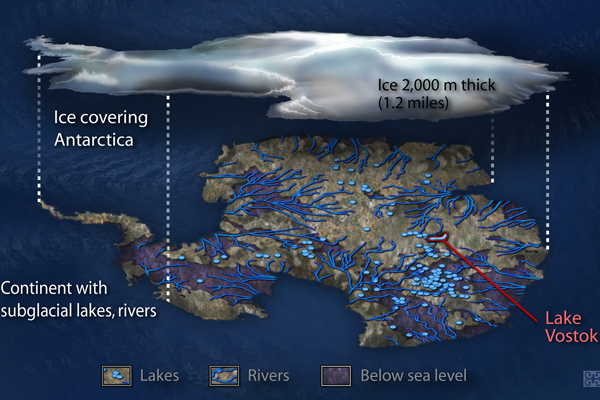
Photo: https://www.livescience.com/ 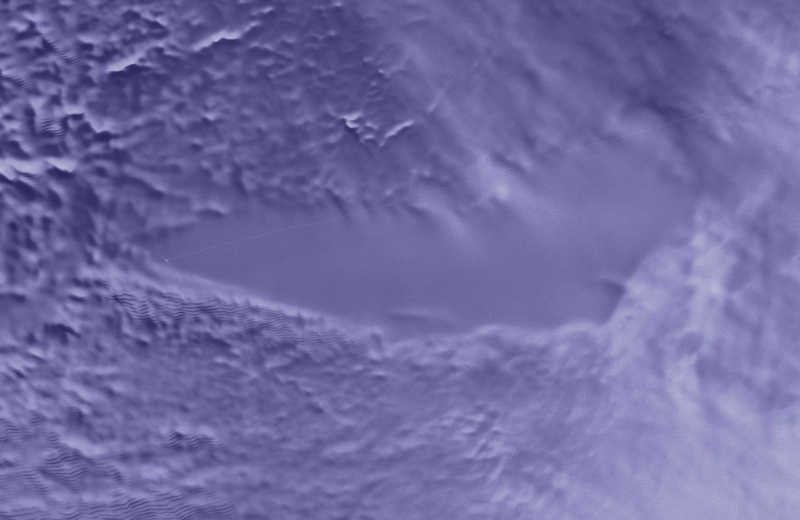
Photo: https://www.thoughtco.com/ -
Start in Lake Vida if you were going to compose a horror film about Antarctica. A closed-basin endorheic lake, Lake Vida is one of the bigger lakes in the McMurdo Dry Valley area. The lake's permanent surface ice, which reaches a depth of at least 21 meters, is the thickest non-glacial ice on the planet (69 ft). Brine, which is seven times as salty as saltwater, gets soaked into the ice at deep. For thousands of years, the ice cover has protected the salty brine from outside air and water, creating a time capsule for ancient DNA. Lake Vida is the only lacustrine ecosystem on Earth with this particular mix of lake characteristics.
A 2,800-year-old bacterium that had been frozen in water was revived and defrosted by scientists in 2002. In Lake Vida, several microscopic life forms have been discovered frozen, which might be a sign of the longevity of life on other worlds. The microorganisms sprang to life again after freezing, and they multiplied and flourished. Lake Vida is currently recognized as a destination for study into Earth's climate and life under harsh conditions, especially the fauna that may have lived on Mars, as a result of this finding and the freezing mechanisms generating Lake Vida's ice-seal. For this kind of research, the unmanned Lake Vida Meteorological Station continuously tracks the local climate.
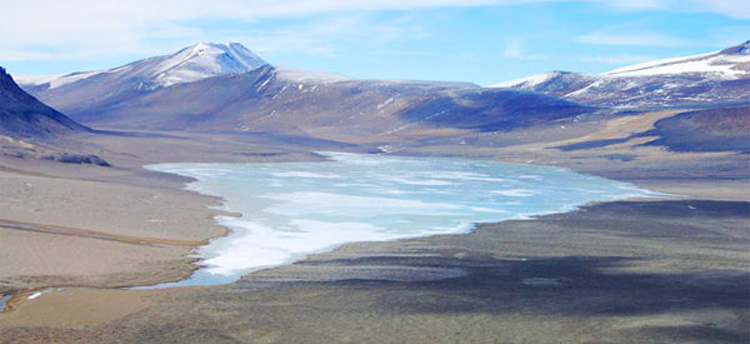
Photo: https://www.daviddarling.info/ 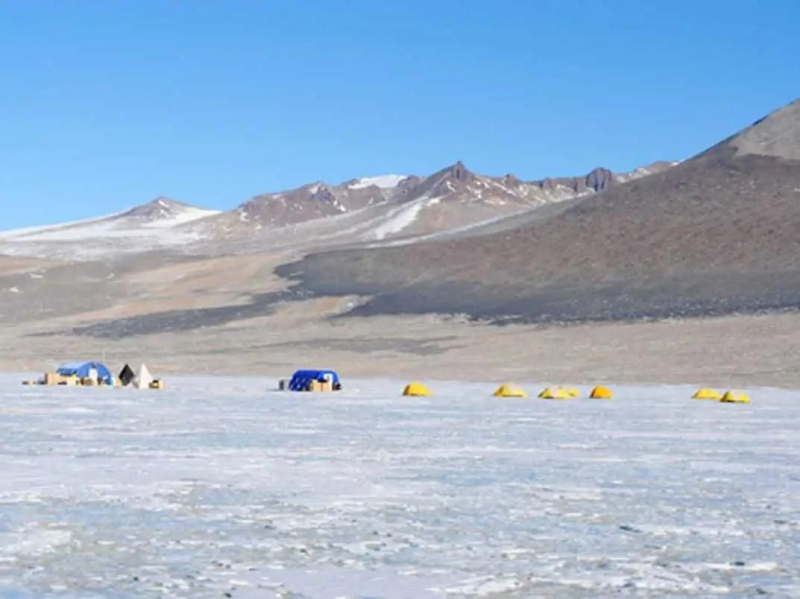
Photo: https://www.businessinsider.com/ -
Lake Whillans was considered one of the most beautiful lakes in Antarctica. Lake Whillans, which bears the name of an Ohio State glaciologist, was also found in 2007. The lake is situated in the west of the continent beneath the Whillans Ice Stream, close to the edge of the Ross Ice Shelf. Despite being just 7 feet (2 meters) deep, Lake Whillans lies 2,600 feet (800 meters) below the ice's top and is thought to have a surface area of 60 km2. Fish and jellyfish were found to live in the seas below the ice shelf in 2015. Lake depths have been measured to be about 2 meters thus far (7 feet). Due to the high pressure, it has a temperature of 0.49 °C, which is below 0 °C.
Helen Fricker, a glaciologist at the Scripps Institution of Oceanography, initially identified the lake in 2007. Her team concluded that there was a lake because satellite laser altimeter data from NASA's ICESat had shown the ice there growing and receding.
The last time the West Antarctic Ice Sheet was considered to have melted so severely that the lake region had been exposed to the ocean, experts believed Lake Whillans had been buried by ice for at least 120,000 years and potentially up to 400,000 years when they dug into it. However, the evidence was published to indicate Lake Whillans may have had a connection to the ocean as recently as 5,000–10,000 years ago.
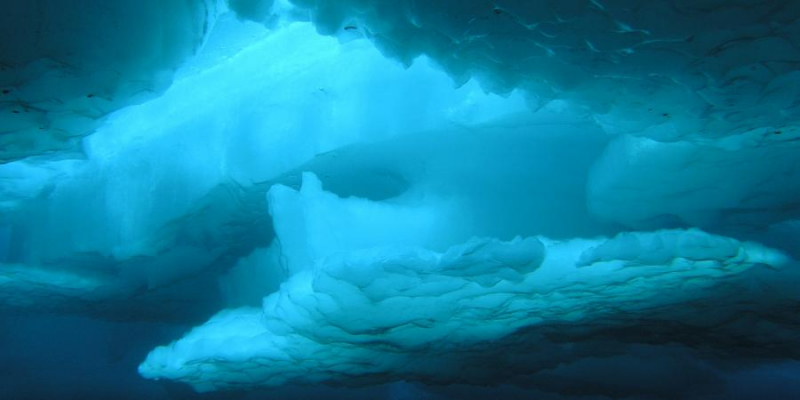
Photo: https://www.ausableriver.org/ 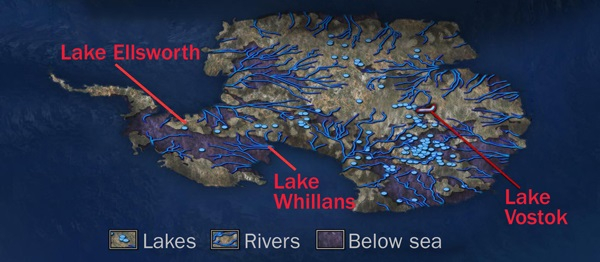
Photo: https://www.sciencenews.org/ -
German for "Lower Lake," Lake Untersee is a lake with that name. The lake, which is the biggest surface freshwater lake in central Queen Maud Land in East Antarctica's Gruber Mountains, is well-known. The lake has a surface area of 11.4 square kilometers (4.4 sq mi), is 6.5 kilometers (4.0 km) long, 2.5 kilometers (1.6 mi) broad, and has a maximum depth of 169 meters (554 ft). This lake in Antarctica, in contrast to several others, is not subglacial and is surrounded by sizable mountains and glaciers, giving it a lovely sight to see. Researchers have been able to better understand the implications of climate change in the coming decades because of the ice that covered the region over 100,000 years ago.
The lake served as a test site for the "Tawani Foundation 2008 Antarctic International Expedition," which was led by Richard Hoover of NASA's Marshall Space Flight Center, in its search for extreme life in November and December 2008. Lake Untersee may serve as a model for ecosystems that exist elsewhere in space. The conditions are comparable to those that are predicted to occur on other moons and planets that include water ice and methane.
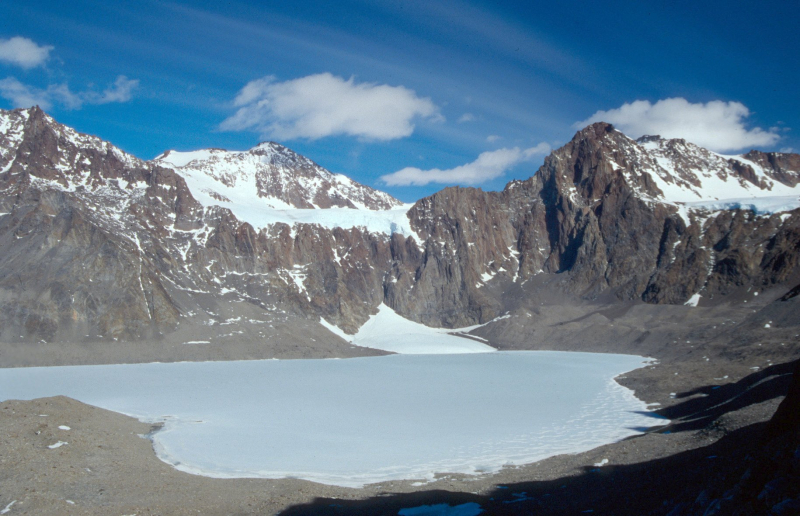
Photo: https://en.wikipedia.org/ 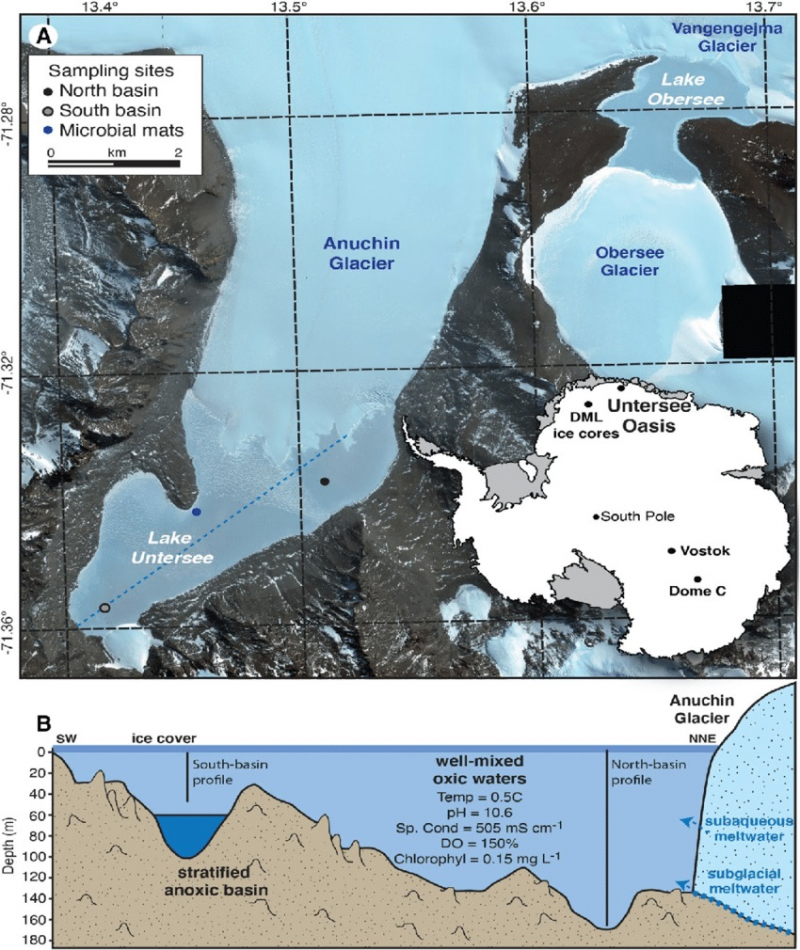
Photo: https://www.researchgate.net/ -
One of the most beautiful lakes in Antarctica is Lake Vanda, which is situated in Wright Valley. The lake is long and narrow and was long under New Zealand's control. Although the lake is mostly covered by ice the whole year, some melting in late December provides a moat to the coast. The lake is classified as hypersaline, meaning it is extremely, very salty - even more so than the Dead Sea. Vanda station is also located near Lake Vanda. You might be asking why Lake Vanda is more popular with tourists since it is the location of the Royal Lake Vanda Swim Club. Visitors can bathe in the salty water and relax (much like they would in the Dead Sea), and those who do so are given a shoulder patch to mark the occasion.
In response to climate-driven fluctuations in ice-cover sublimation, meltwater production, and yearly flow of the Onyx River, the lake's primary supply of water, lake levels increased by 15 m during the previous 68 years. Both Lake Vanda and the Onyx River are devoid of fish species, yet tiny life, such as cyanobacteria algae blooms, has been observed. Scientific diving activities are only permitted in the top layer due to worries about the potential effects of research on the environment, and the use of remotely piloted underwater vehicles is not permitted.
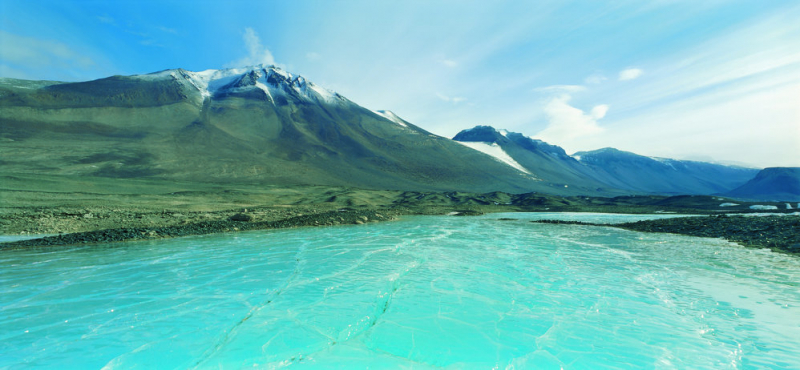
Photo: https://www.adam.antarcticanz.govt.nz/ 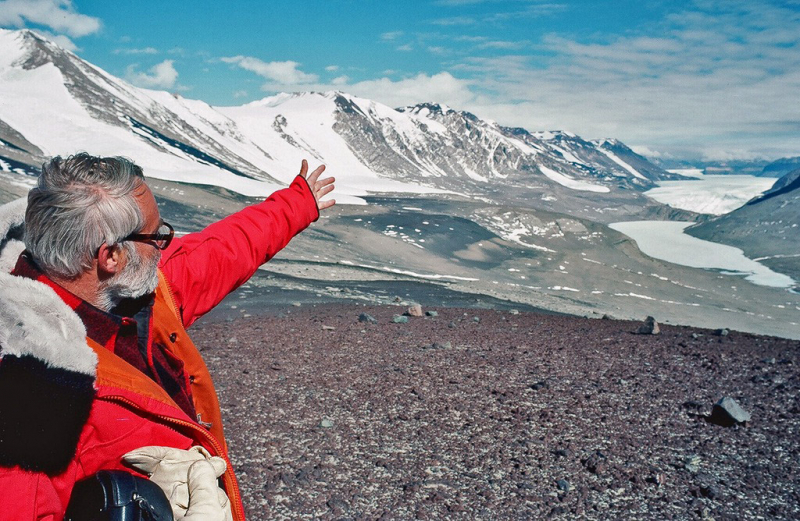
Photo: https://www.coolantarctica.com/ -
Since it was examined by the first British expedition to the continent in 1901 and then again in 1913, when it was officially given its name, Lake Bonney is perhaps one of the most well-known lakes in Antarctica. Thomas Goerge Bonney, a professor of geology in Britain, is honored by the name Lake Bonney. By a glacier under the lake, researchers found an ancient ecosystem in 2007. The lake's ecosystems are still being researched right now. Lake Bonney is one of the main lakes studied by the National Science Foundations, McMurdo Long Term Ecological Research site.
7 km long and up to 0.9 km broad, Lake Bonney is a sizable body of water. It is 57–60 meters above sea level. The 3.7–4.5 m thick ice that covers Lake Bonney is a result of the severe Antarctic environment. Since less than 5% of sunlight can penetrate the ice, the lake remains always gloomy or almost so. A little moat in the ice may only open during the summer. There is a severe phosphorus deficit, which leaves the lake water devoid of nutrients. Nevertheless, cyanobacteria, proteobacteria, algae, and ciliates are present in the lake's deeper regions.
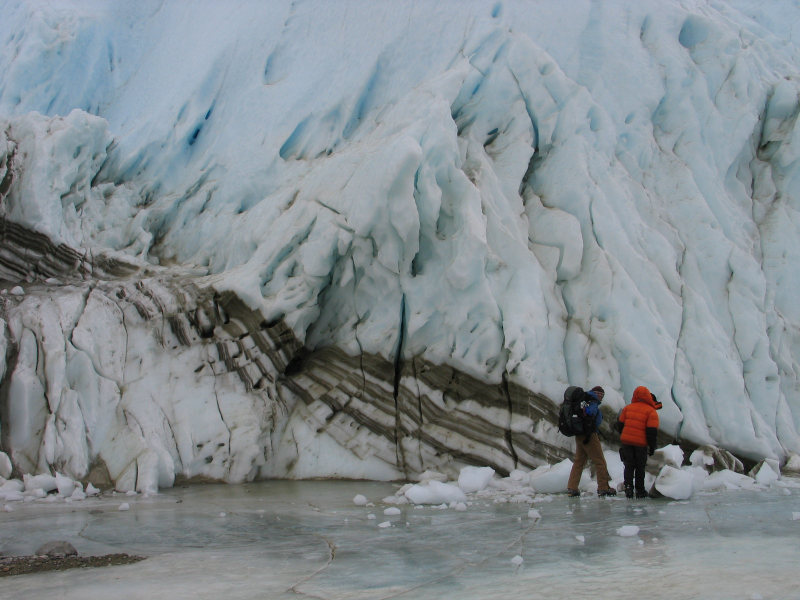
Photo: https://en.wikipedia.org/ 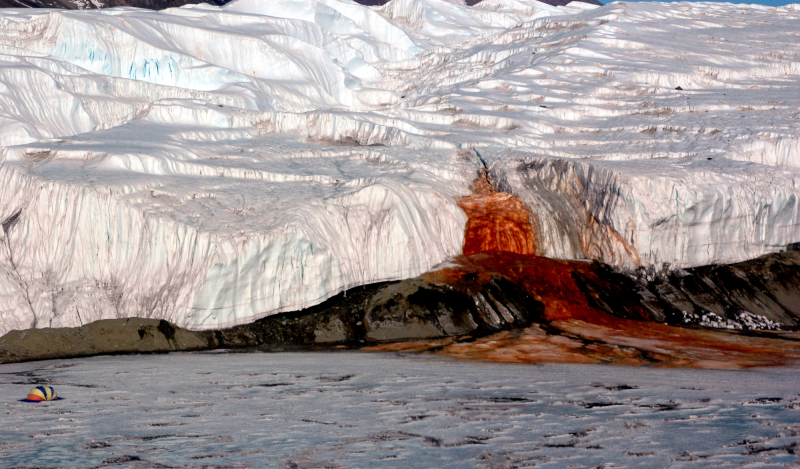
Photo: https://www.lakescientist.com/ -
Don Juan Pond is more than simply a silly-sounding name. The hypersaline lake, which lies close to Lake Vanda, is the second-saltiest body of water on the planet. As a result, the salinity of the lake permits it to stay liquid despite the bitterly cold Antarctic climate. The first persons to look into Don Juan Pond were two helicopter pilots who found the lake in 1961 and gave it its name.
Since it was founded in 1961, Don Juan Pond has generated a lot of interest among scientists, especially astrobiologists. The landscape, which is reminiscent of Mars, is used by researchers to investigate what may be humanity's next frontier: Mars.
Don Juan Pond is just four inches deep, giving it the appearance of a thick, salty puddle rather than a proper pond. The shallow water is so salt-rich that it doesn't freeze even when the temperature drops well below zero. However, even though it never freezes, neither the pond nor its surroundings are home to any aquatic life.
Don Juan Pond is situated in the Wright Valley, which contributes to its salinity. At the heart of the McMurdo Dry Valleys, one of the driest and coldest deserts on Earth. It releases a lot of salts and the many kinds of salts that have collected, much like a scorching desert.
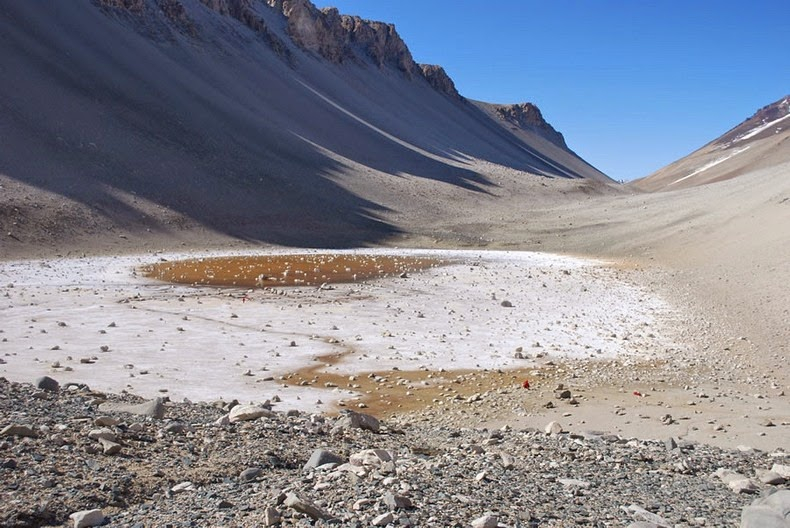
Photo: https://www.amusingplanet.com/ 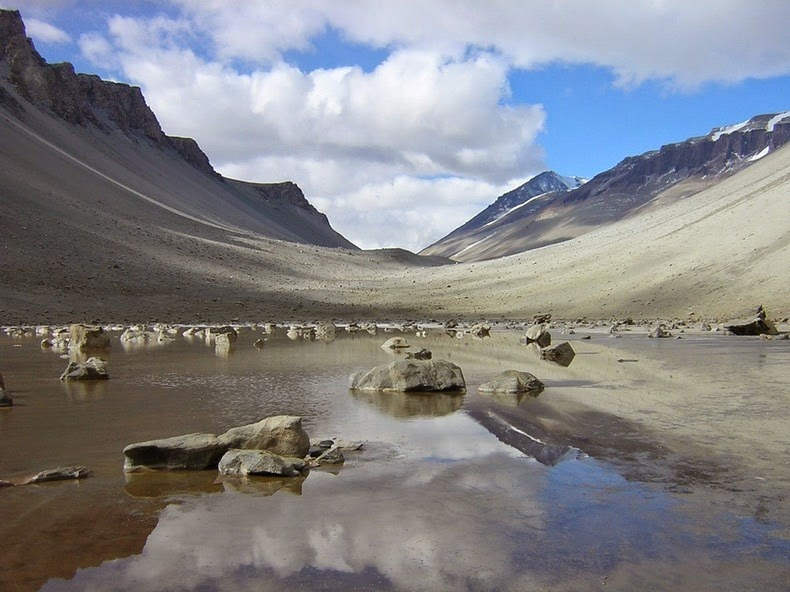
Photo: https://www.amusingplanet.com/










